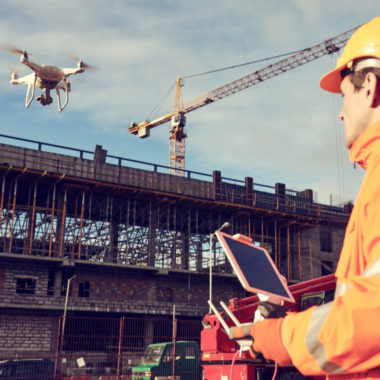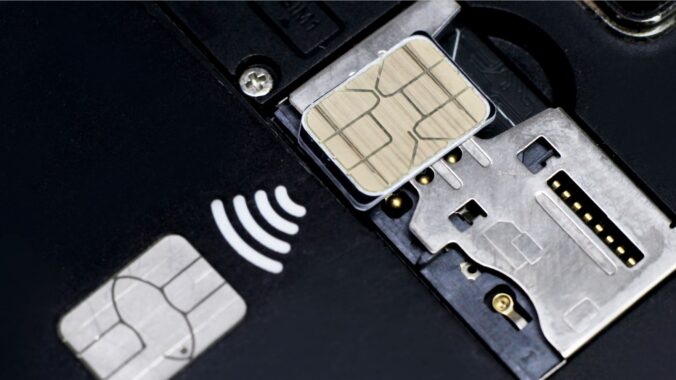Did you know that the commercial drone market is one of the fastest and most innovative sectors of the IoT? Commercial drones have now become a vibrant, emerging industry, which has the potential to cater to a whole spectrum of commercial needs. According to Drone Industry Insights, the drone market reached a total value of $22.5 billion last year. By 2025, this figure is expected to exceed $42 billion.
By 2035, our skies will be at least ten times busier than today, with a large portion of the flying hours flown by drones operating Beyond Visual Line of Sight (BVLOS) across all environments to provide a wide variety of services: critical infrastructure inspection, deliveries, cargo freight, etc. In terms of services, inspection is currently the top application of drones with UAV deliveries growing fast, as mentioned by the GSMA.
This significant growth is all enabled thanks to the ubiquity, security and reliability of cellular networks. The connected sky is a major new opportunity for mobile network operators (MNOs), who can support a wide range of drone-driven applications. Mobile networks can be used to identify a drone, establish its location and communicate securely with it to help mitigate privacy, safety and security risks. 4G, and specifically 5G networks, also offer high-speed drone connectivity over large areas, making cellular networks the preferred solution for connecting drones.
MNOs have the assets in their hands to address the commercial drone challenges including BVLOS, data management, integration to the aviation space, in a rapidly growing ecosystem, which needs to meet local aviation regulations.
Why do MNOs play a key role in the drone ecosystem?
There are five fundamental reasons for this, which include a mix of technical and business-related topics.
- Leveraging cellular connectivity for many applications
MNOs can deliver extreme 5G mobile broadband speed and ultra-latency, which can open up endless opportunities for drone operators. For example, the high-bandwidth two-way communications available over 5G networks provide significant benefits to applications such as inspection, surveying, monitoring and surveillance. It also enables the live streaming of images, video or other data, allowing operators to review this information while the drone is in flight mode, and take immediate actions as required.
- Improving the safety of drone operations
Already engaged in the digital onboarding of consumers, MNOs are ideally positioned to provide drones and their operators with strong registration solutions. Registering pilots and drones with public authority servers needs to be secure and reliable. Just like a car’s licence plate is linked to its driver, drones are linked to their pilots. Additionally, they already manage the connectivity of billions of secure devices (SIMs and eSIMs), ideally suited for cellular IoT
- Market leaders
MNOs are key enablers for innovation and there is a multitude of examples for this, with the most prominent being that they enable the widespread availability of connectivity like 5G and 4G. Other big trends impacting the industry include the Internet of Things (IoT) devices and sensors, AI and machine learning algorithms and data analytics. These technologies influence almost all industries of the technology economy, and MNOs’ role in enabling their widespread use is undeniable.
- Sales capabilities
MNOs have a large and strong customer network throughout different business service departments. With a strong sales force and the ability to address B2B and B2B2C businesses, MNOs are ideally positioned to help many organisations take advantage of the commercial drone revolution.
- Strong brand recognition in the country where they operate
Telecom operators have strong brand value and recognition in each country they operate, as well as an extensive network of leading technology partners. MNOs are already regarded as trusted national service providers, enabling essential connectivity solutions for governments worldwide. Furthermore, some of them are already involved in commercial drone activities and have solid relationships with aviation regulators.
Examples of Mobile Network Operators involved in drone applications
There’s a new opportunity for MNOs to enable a wide range of drone-led security-sensitive applications across a multitude of verticals, including transportation, industry, emergency services, as reported by the GSMA. For example, drones can offer organisations the ability to transport essential supplies to remote areas. Earlier this year, Verizon’s Skyward and UPS Flight Forward announced that they’re partnering to test a delivery service with drones connected in 5G. This connectivity will help them manage and support multiple drones, flying simultaneously, and going to different places from a single point of departure. 5G’s low latency and edge computing also allow for monitoring air traffic entering and exiting a busy logistics hub, especially those that use mixed fleets of autonomous vehicles like drones, trucks, and airplanes.
In terms of industry applications, drones can help construction companies to safely and efficiently reach inaccessible or unsafe areas, monitor their development as well as easily assess health and safety.
To enable use cases like the examples mentioned above, it’s essential that MNOs provide the mobile network infrastructure that can enable a safe BVLOS flight. Vodafone for example has conducted a number of cellular network trials in the past three years to test capabilities such as remote command and control as well as network-based geo-location. This has enabled the MNO to create dynamic no-fly zones. For example, connecting drones to Vodafone’s cellular network, drone operators and relevant authorities are able to create and remove no-fly zones at any given time and location, which the drones respond to in real time. Incorporating this feature within the cellular network enables the safe and reliable management of drone activity in scenarios such as crime scenes and major incidents.
Drones will undoubtedly become an integral part of the smart cities of the future. The creation of a seamless sky is already underway in Australia, with Thales and Telstra having recently prototyped LAAM (Low Altitude Airspace Management) technology, which dynamically manages airspace, integrating manned and unmanned traffic whilst automating drone flight approvals. The companies have combined their expertise to build a robust, safe and secure ecosystem, preparing the way for the integration of manned and unmanned traffic in the Australian skies.
See how Thales helps MNOs become key players in the commercial drone’s market with solutions that:
- Connect seamlessly drones and ensure a continuity of service.
- Protect devices, identity and data.
- Predict to prevent and detect threats.
Find more information on drone solutions here.



